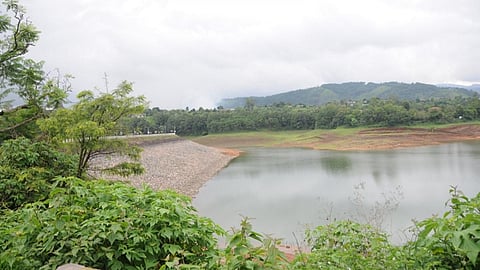
- Topics
- Feature
- Opportunities & Events
- Data
- Hindi Portal
- Topics
- Feature
- Opportunities & Events
- Data
- Hindi Portal

Meghalaya exemplifies participation at scale and community empowerment in participatory water projects
In 2021-22, the Ministry of Jal Shakti had allocated Rs 51.50 crore, an increase of 323 percent over the previous year, to the water projects and made community participation a priority. Critics, however, using the example of Atal Bhujal Yojana note, that the programme is struggling to spend allocations and no amount has been spent on training and awareness generation for the communities.
Moreover, understanding, measuring, and auditing community participation is a difficult exercise; despite this, Meghalaya has had much success in bringing natural resource management back to its citizens through its Community Led Landscape Management Program. The state has used 900 content pieces for capacity building and trained over 6500 people. As a result, the state has shown that participation can be achieved in practice, while leaving behind clear audit trails and empowering the people who are leading and implementing successful water management strategies in their villages. (Hindustan Times)
Centre plans to look at foreign model for Ganga river management
The National Mission for Clean Ganga’s (NMCG) Executive Committee recommended a proposal by the Centre for Policy Research (CPR) on the relevance of the European experiences for Namami Gange Programme (NGP). CPR proposes that literature review about European transboundary river revitalization be used to create an India-relevant critical narrative for learning from and to encourage research for informing policy thinking about Namami Gange Programme and rejuvenating India's rivers.
This comes after spending seven years and over Rs 20,000 on the Namami Gange project. Moreover, the NMCG has repeatedly said that foreign river cleaning experiences are not suitable for the Ganga programme since Indian rivers are rain-fed and the flow of water keeps changing throughout the year.
(The New Indian Express)
India’s 1st weather hazard and vulnerability atlas launched
The India Meteorological Department (IMD) launched its Climate Hazards and Vulnerability Atlas of India on its 147th Foundation Day. The first-of-its-kind atlas takes into account 14 extreme weather events and the risk they pose to local economies and livelihoods. The atlas features extreme rainfall, drought, coldwave, heatwave, dust storms, hail storms, thunderstorms, cyclones, snowfall, lightning, winds, and fog. The hazards and vulnerability values have been calculated utilising the Met department’s historical climate data.
The atlas indicates that lightning is the leading cause of casualties, while cyclones, floods, and fog cause losses in economic terms and livelihood.
(The Indian Express)
100 sq km land area near Delhi NCR region is prone to subsidence: Study
Recent research found that land subsidence is occurring at 17 cm/year in recent years. This is an increase of 60 percent compared to 2014-16 when land subsidence was occurring at 11 cm/year. According to the research, the area around Delhi Airport has the highest risk of subsidence. Land subsidence occurs when the upper layer of the land starts to lean towards the lower layer due to mining, oil extraction, and groundwater extraction.
The latter being the most important factor behind land subsidence as it leads to weakening of the upper layers which in turn bend towards the lower surface.
According to the study, increased population demands more water, so rainwater harvesting and sustainable development are the most effective ways to overcome groundwater scarcity and land subsidence. (Zee News)
In Hyderabad, 200 water ATMs stand useless after five years of installation
In 2017, 114 water ATMs were installed in collaboration with Josab International AB of Sweden and Natures Spring Eco Tap Private Limited, but the entire ATM network in the city was rendered useless due to lack of maintenance. There are currently 200 automatic water vending machines in the city, but they are currently non-functional due to broken pipes, stolen tumblers, and broken coin slots.
Despite multiple complaints, Greater Hyderabad Municipal Corporation turned a blind eye to the issue despite the water ATMs' popularity and cost-efficiency. According to the city's social activist, the civic body did not pay attention to the maintenance issue before going ahead with the initiative.
(The Times of India)
This is a roundup of important news published from January 20 – 31, 2022. Also read policy matters this fortnight.